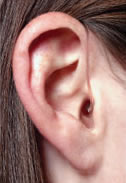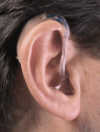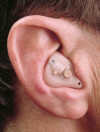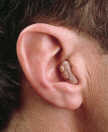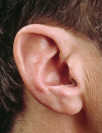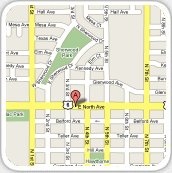Hearing Aid Styles
There are five primary styles of modern hearing aids. They are: Open-Fit, Behind-The- Ear (BTE), In-The-Ear (ITE), In-The-Canal (ITC), and Completely-In-The-Canal (CIC).
While many people choose style based on vanity, decisions regarding which style of hearing aids are most appropriate for you may need to be based on a variety of factors.
Physical factors include:
The shape of your outer ear: deformed outer ears may not allow for wearing of BTE styles.
The depth of the depression near the ear canal (technically called the concha): if your ears are very shallow there may not be adequate space for certain ITE model aids.
The ear canal size and shape: certain ear canals may be too narrow or shaped in a manner such that ITC or CIC hearing aids will either not go in easily, or may fall out too easily.
Manual dexterity: not only is the removal and insertion of canal style hearing aids difficult for some people, but some individuals are unable to insert the battery or manipulate the volume control.
Wax in the ear: some people build up large amounts of earwax, or may have extremely moist ear canals that require adequate ventilation. For these people ITC, or even certain full size ITE aids may not be appropriate.
Draining ears or ears otherwise having medical problems may not be able to safely utilize hearing aids that completely block the ear canal. For these ears, it is vital to allow ventilation so hearing aids that do not fully block the ear may be required. Sometimes, BTEs that are connected to earmolds that have large vents (openings to let air pass through) are useful.
Hearing related factors include:
The shape of the audiogram (hearing test); individuals who have hearing loss for certain pitches (frequencies) but not others, (for example those who hear the low frequencies fine, but have a high frequency hearing loss) may be better served by systems that do not fully block the ear canal.
Degree of loss; currently, severe and profound hearing losses are best served by BTE style aids. This style may also minimize the likelihood of feedback (whistling).
The need for special features such as directional or multiple microphones and/or the use of a telecoil (a small magnetic loop contained in the hearing aid that allows for better use with telephones or assistive listening devices), may dictate the preferred style.
Acoustic feedback (whistling) occurs when the microphone is close to the loudspeaker. BTE aids have a clear advantage over the smaller ITE or ITC aids because feedback is less likely to occur. While you may feel that you will only wear an inconspicuous device, check the appearance of a small or mini-BTE aid coupled to the ear with an open earmold. A mini-BTE aid connected to the ear with an open earmold may be less conspicuous than most ITE and many ITC aids. Most importantly, discuss the pros and cons of different styles with your audiologist.
If you have questions, feel free to call one of our experienced technicians (970-242-4000), or make an appointment.
